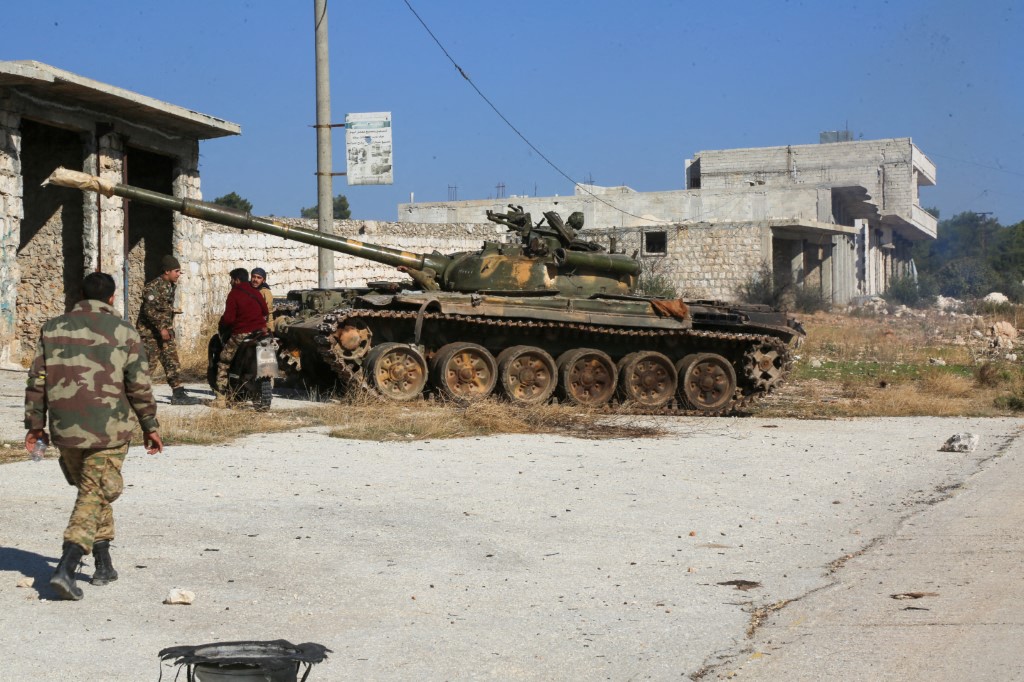In a significant escalation of conflict, jihadist fighters and their Turkish-backed allies launched an offensive against government forces in Aleppo, Syria’s second city, on Friday. This marked one of the most intense bouts of fighting the country has experienced in recent years, resulting in the deaths of at least 242 individuals, a majority of whom were combatants from both sides, although civilian casualties included 24 fatalities primarily attributed to Russian air strikes.
The offensive commenced against the backdrop of a delicate ceasefire that had just been established between Hezbollah and Israel in Lebanon, underscoring the volatile nature of the region. Since the outbreak of the Syrian civil war in 2011—triggered by a brutal crackdown on pro-democracy demonstrations by President Bashar al-Assad’s forces—the conflict has resulted in over 500,000 deaths, the displacement of millions, and significant damage to the country’s infrastructure.
Over the years, Syria’s internal struggle has evolved into a multifaceted war involving jihadist factions and a plethora of foreign nations. Key players include Assad’s allies such as Russia, Iran, and Hezbollah. Although Syrian government troops have reclaimed most of the territory previously lost during the conflict, the regions held by jihadist factions have been under a fragile truce since 2020.
This week, the jihadists, along with elements supported by Turkey, intensified their assault, making substantial territorial gains. Reports indicate that they took control of over 50 towns and villages in northern Syria, a significant advancement amid years of stagnation for anti-government forces. The fighting saw the crucial highway connecting Aleppo to Damascus severed, a vital route reopened by regime forces in the preceding years.
In government-held Aleppo, the violence reached a tragic peak when a university student residence was shelled, resulting in the deaths of four civilians. As the offensive unfolded, the UN Office for the Coordination of Humanitarian Affairs reported that over 14,000 people have been displaced, nearly half of whom are children.
The jihadist group Hayat Tahrir al-Sham (HTS), which emerged from Al-Qaeda’s former Syria branch, spearheaded the latest offensive. During a press briefing, HTS spokesperson Mohamed Bashir articulated that the operation was aimed at neutralizing the perceived threats posed by government forces. HTS holds sway over large portions of Idlib and parts of Latakia, Aleppo, and Hama provinces, areas that had largely been stabilized under a tense ceasefire mediated by Turkey and Russia since a Syrian government offensive in March 2020.
Journalists in rebel-controlled territories reported fierce exchanges of fire just a few kilometers from Aleppo’s city center, and analysts observed that the situation was exacerbated by the perceived readiness of the Syrian military and its Russian backers to initiate a campaign in the Aleppo region.
The involvement of international actors further complicates the landscape. Alongside Russian forces, Assad has relied on Iranian support alongside militant groups like Hezbollah. Analysts, including Nick Heras of the New Lines Institute, asserted that anti-government forces are currently well-positioned to engage in territorial confrontations, especially as Iranian focus shifts toward Lebanon during escalating tensions with Israel.
In a harrowing development, an Iranian Revolutionary Guards general was reported killed during the fighting, while Iranian officials condemned the offensive as a strategic endeavor orchestrated by Israel and the United States to foster instability.
The current situation has raised questions regarding the preparedness of Assad’s forces, particularly given their reliance on Russian air support and the apparent intelligence failures regarding HTS’s intentions. The evolving dynamics of this conflict continue to pose serious challenges not only for Syria but also for broader regional stability, as the intertwining interests of various factions play out in increasingly unpredictable and deadly ways.





